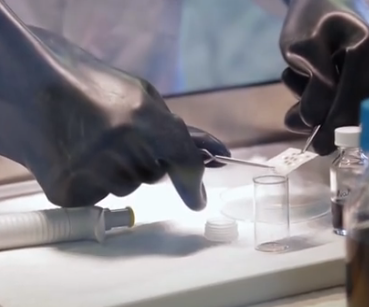The dearth of government support for renewable energy in Australia has spawned yet another crowd funding effort, this time to support the development of a potentially game-changing hydrogen energy storage breakthrough.
The campaign, called EnergyH, was launched this week by the University of New South Wales‘ Materials Energy Research Laboratory in nanoscale – or MERlin – to fund ongoing research and development of its groundbreaking method of storing hydrogen safely and with a 10,000 fold decrease in storage space required.
It is the team’s second attempt to raise funds for the project, this time using their own platform. As MERlin team leader François Aguey-Zinsou said in a comment on an ABC Radio website, they are depending of the success of this crowd-funding campaign.
“Because of current budget restrictions there are massive cuts in research funding so we will eventually have to stop working on this technology despites its potential,” he wrote.
As the ABC’s Robin Williams noted on his radio program earlier this week, hydrogen is considered by some as the Holy Grail as a clean energy fuel source.
It is abundant, produced from the electrolysis of water, and when burnt, the only bi-product is water. It can be used to power cars – indeed it already is – and to replace LNG for heating and cooking and to generate electricity. What’s more, as Williams notes, if the power for electrolysis is sourced from wind or solar, then you’re looking at an economy that exists without the need for fossil fuels.
But hydrogen is also voluminous and volatile, and therefore has proven difficult to store. The UNSW team has come up with an answer to this using sodium borohydride (NaBH4).
The technology means it can store the equivalent of a 5 meter balloon-worth of hydrogen into just 50cm, and at room temperature. The team is currently working on reducing the amount of heat needed to release the stored hydrogen.
To demonstrate its technology, the team has developed a hydrogen-powered bicycle – the HyCycle – which features a 738Wh hydrogen canister, a 518Wh lithium-ion battery, a 100W fuel cell and a 200W electric motor.
As you can see in the picture (at right), the hydrogen canister is more compact than the battery, and can provide more energy.

Of course, MERlin’s technology holds great promise for renewable energy sources like wind and solar, because in the quest for large-scale energy storage to solve problems of intermittency, hydrogen has the potential to be much more efficient than batteries.
According to the MERlin team, hydrogen storage materials have a much greater energy storage capacity than most batteries, which means that more energy can be stored in a smaller space compared to batteries.
This becomes particularly important when dealing with storing energy for transport applications such as cars and planes, says the UNSW team, where a smaller sized system is much more practical.
But while it is all very promising, it needs steady funding. And as the MERlin website notes, this has not been forthcoming in Australia, where politics has been getting in the way.
“While the rest of the world powers ahead and pours billions of dollars into research and development, our current government is cutting funding to science and technology across the board,” it says.
“We would like to go straight to the people and businesses that can see that renewable energy is the future, and work with them to build an industry that will create jobs and export opportunities for Australia. Australia should not be left behind!”
Supporters of the EnergyH campaign can make a donation – either directly or via the “EnergyH Pop Balloons Challenge”; or invest in the technology.










